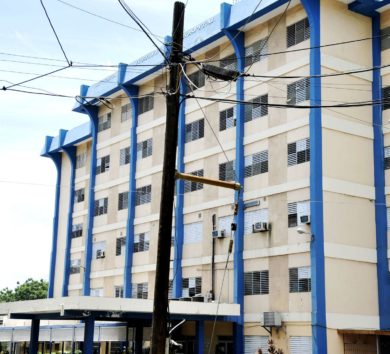

By Dr Jerome Walker, Consultant Medical Microbiologist
The recent detection of Escherichia coli (E coli) in sections of the water supply has prompted understandable concern. E. coli is a type of bacteria found naturally in the intestines of humans and animals. While most strains are harmless and even beneficial, some can cause illness in humans when ingested through contaminated food or water.
Certain strains are capable of causing gastrointestinal illness, urinary tract infections, and in more serious cases, bloodstream infections. When found in drinking water, E. coli is considered a key indicator of fecal contamination and suggests that other harmful microorganisms may also be present.
Water systems are routinely monitored for the presence of coliforms, a group of bacteria that includes E. coli. These organisms are used to signal whether the water supply may have been compromised, potentially through damaged pipes, flooding, or sewage leakage. Their detection typically triggers a series of public health protocols aimed at restoring water safety—these may include flushing supply lines, chlorination, and issuing boil water advisories.
Boiling water is an effective way to make it safe for consumption. Water should be brought to a rolling boil for at least one minute to destroy harmful bacteria, viruses, and parasites. This simple practice can significantly reduce the risk of infection during a contamination event.
Hand hygiene remains one of the most important tools in preventing illness. Hands should be washed thoroughly with soap and clean water, particularly after using the bathroom, before preparing food, and after handling raw produce or meat. Fruits and vegetables should be properly washed before consumption, and foods should be cooked thoroughly to reduce the risk of ingesting harmful microbes.
Individuals at the greatest risk of illness from contaminated water include young children, the elderly, and those with weakened immune systems. Infants and small children are particularly vulnerable to dehydration, which can develop rapidly if they become ill.
Symptoms of E. coli infection can include abdominal cramps, diarrhoea, nausea, vomiting, and low-grade fever. Dehydration may develop as a result of fluid loss. In children, signs of dehydration include dry mouth and tongue, fewer wet diapers, drowsiness or irritability, and the absence of tears when crying. In adults, symptoms may include increased thirst, dark urine, fatigue, and dizziness.
Treatment focuses on replacing lost fluids. Oral rehydration salts (ORS), which are available at pharmacies, are an effective first-line treatment. Other suitable fluids include coconut water or commercially prepared electrolyte solutions. Continued intake of food, especially nutrient-rich meals, is recommended if the person is able to eat. Zinc supplementation may help reduce the severity and duration of diarrhoea in children.
Persistent diarrhoea, especially when accompanied by blood in the stool or signs of significant dehydration, should prompt medical evaluation. While many cases are self-limiting, symptoms that continue or worsen over time—particularly over several days or beyond two weeks—warrant medical attention. Failure to pass urine, dry skin that doesn’t rebound when pinched, or signs of fatigue and rapid heartbeat are red flags that should not be ignored.
Maintaining a safe and reliable water supply is essential to public health. Regular surveillance and transparent reporting ensure that potential risks are identified and managed early. A well-resourced and independent monitoring system, supported by both public and private sectors, is critical to protecting communities from preventable disease outbreaks.
While bacterial contamination like E. coli garners attention, other organisms—including viruses and parasites—can also pose a risk to water quality and public health. Continued investment in infrastructure, public education, and scientific research is essential.
In this context, the upcoming Global Virus Network (GVN) Arbovirus Research and Education Symposium, to be held on May 1 and 2 in Kingston, Jamaica, provides an important platform for sharing knowledge and strengthening regional preparedness. Hosted in partnership with the University of the West Indies, Mona Campus, and the SUNY-UWI Global Infectious Diseases Research Training Program, this hybrid event will bring together local and international experts to explore the latest in virology and disease prevention.
The symposium underscores the importance of collaborative science, robust surveillance systems, and proactive responses in protecting public health. Events like these are not just about viruses—they are about building capacity to manage all forms of infectious disease threats, from familiar bacteria to emerging pathogens.
Together, we can safeguard our communities—one drop, one discovery, one step at a time, in Jamaica, our land of wood and water.
Dr Jerome Walker is a physician, Lecturer, and Consultant Medical Microbiologist at UWI Mona, and a site investigator with the Abbott Pandemic Defense Coalition.







Comments